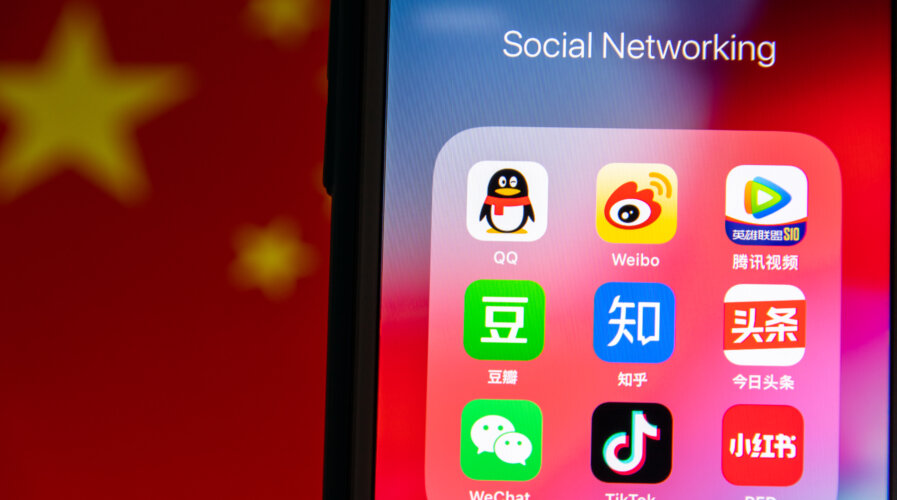
(Source – Shutterstock)
As India and US look to ban Chinese technology, will Southeast Asia be China’s redeemer?
|
Getting your Trinity Audio player ready... |
When it comes to technology, the US, India and China are pretty much dominating development today. While there are other countries in the Asia Pacific and Europe also actively developing new technologies, these three countries are often in a league of their own.
Even before the COVID-19 pandemic, the US, India and China were competing with each other for technical superiority in each sector. Be it quantum computing, artificial intelligence, electric vehicles, or semiconductors, each country had its own master plan for achieving its goals.
While India may seem to be trailing behind China and the US, its capabilities in matching China’s manufacturing strength, adaptability and growing tech population is making the country quickly become a tech giant nation itself. In fact, India’s semiconductor industry is growing rapidly, while its EV ambitions are now being taken seriously around the globe.
Despite the competition between the three countries, there are still concerns among them when it comes to using technology from China. Both the US and India continue to take action against Chinese technologies that are being used in their countries, with some applications and tech brands even being banned.
The Indian government has already banned apps that are Chinese-owned since June 2020. This includes social media apps like TikTok, WeChat, Bigo Live as well as gaming apps like PUBG. Citing privacy and espionage concerns, the banning of China technology products has even raised concerns that Chinese-made mobile phones, which are extremely popular in India, facing similar situations as well.
Now, India’s Ministry of Electronics and IT has begun a process to ban and block 138 betting apps and 94 loan lending apps with Chinese links, according to a report by Reuters. The ban comes under India’s IT law that allows the government to block public access to content in the interest of national security.
When it comes to mobile devices, the Indian government has stated that Chinese smartphone companies like Oppo, Vivo and Xiaomi will not be banned in the country. The government has also asked smartphone makers to increase exports from India.
It’s a similar scenario in the US as well. While China has banned Google and several other tech sites in the country, the US has imposed similar sanctions on Chinese apps. TikTok continues to face challenges operating there with the app already banned from usage on government devices in several states. The House of Representatives will also be looking to vote for a complete ban of the app in March this year. Given the US being the country with the most TikTok users, it remains to be seen how the ban will go down with users in the country.
When it comes to hardware, Huawei seems to be the main target. While many criticized former US President Donald Trump’s actions towards the tech company, current US President Joe Biden seems to be continuing the legacy as well. Most of Huawei’s hardware is already banned in the US, and also by some of its allies, but there are now reports that a complete ban on the tech company could be on the horizon as well.
So with the US and India giving Chinese technology a hard time, China may just find its redeemer in Southeast Asia. The fastest growing economic region in the world is already witnessing rapid technology adoption, thanks to its capabilities of using new technologies with minimal legacy technology.
China’s Huawei and Alibaba have already made significant investments in Southeast Asia and are expected to continue to develop their business in the region. Huawei specifically is looking at providing its 5G infrastructure to both mainland Southeast Asia and also the thousands of islands in the region.
TikTok parent company ByteDance has also increased its investments in the region. The company has already announced plans for new data centers and is also looking to cater more products to meet the demands of local customers. In fact, TikTok’s gross merchandise volume in Southeast Asia reached US$4.4 billion in 2022.
While some ASEAN nations are concerned by China’s continued dominance over the South China Sea, the investments China is bringing to nations in the region are seemingly enabling them to grow and remain influential in the region. Countries like Vietnam, Laos and Thailand continue to enjoy the benefits of Chinese investments in their nation.
For Malaysia, Indonesia and Singapore, China remains an essential trade partner to them. It is also important to note that all of the nations in Southeast Asia want to maintain their good relationships with the US and India as well. Unlike most US allies, ASEAN’s relationship with China remains positive which is why the country could end up finding the region its biggest redeemer for its technology in the near future.
READ MORE
- Safer Automation: How Sophic and Firmus Succeeded in Malaysia with MDEC’s Support
- Privilege granted, not gained: Intelligent authorization for enhanced infrastructure productivity
- Low-Code produces the Proof-of-Possibilities
- New Wearables Enable Staff to Work Faster and Safer
- Experts weigh in on Oracle’s departure from adland


